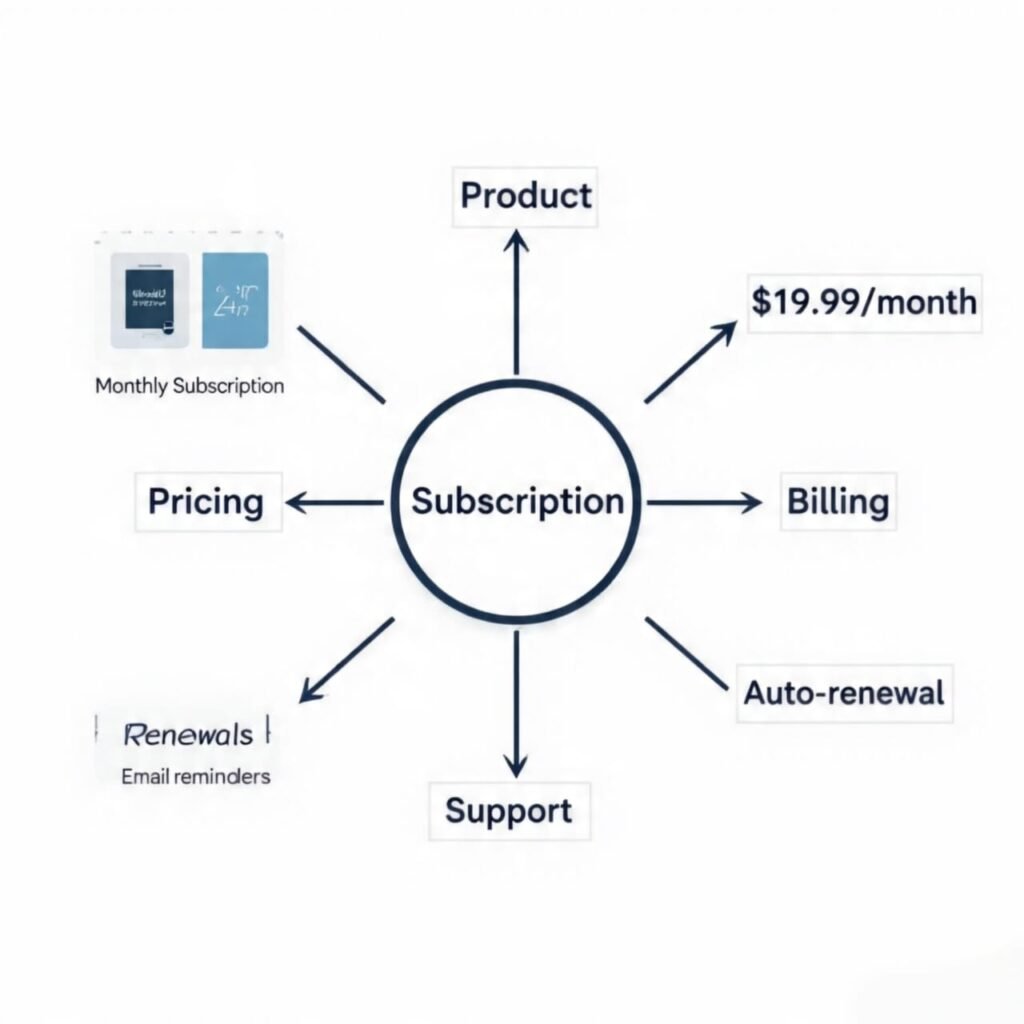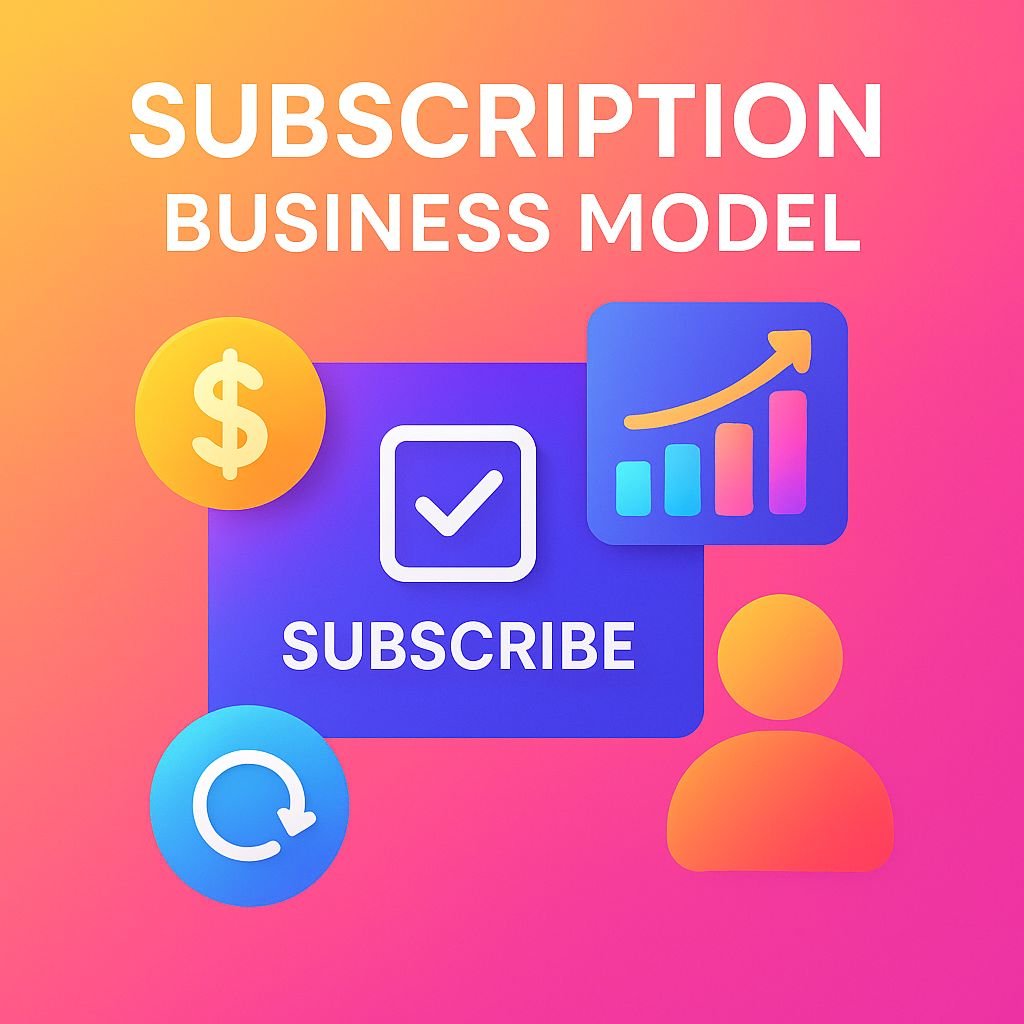In today’s digital economy, businesses are shifting from one-time sales to recurring revenue streams. The subscription business model has become a powerful approach. Instead of making a single purchase, customers subscribe to products or services for ongoing access, often paying monthly or annually.
This model not only enhances customer retention but also provides predictable income, making it easier for businesses to plan and scale. However, like any strategy, the subscription model has both advantages and disadvantages that every entrepreneur should understand before implementation.
What Is a Subscription Business Model?
A subscription business model is a revenue strategy where customers pay a recurring fee—monthly, quarterly, or annually—to access a product or service.
Instead of a one-time transaction, businesses build long-term relationships with customers, offering value. Examples include Netflix (entertainment), Adobe Creative Cloud (software), Dollar Shave Club (consumer goods), and Amazon Prime (e-commerce + services).
This model has grown rapidly thanks to digital transformation and shifting consumer behavior. Today, customers value convenience and flexibility. These are qualities that subscription models deliver.

How Does a Subscription Business Model Function?
A subscription-based company follows a simple cycle:
- Customer Acquisition – Marketing efforts attract subscribers.
- Onboarding – The customer signs up for a monthly or yearly plan.
- Recurring Billing – Payments are automatically charged at regular intervals.
- Customer Engagement – Businesses provide continuous value through updates, new features, or exclusive perks.
- Retention & Renewal – Happy customers stay subscribed, creating a steady revenue stream.
Types of Subscription Business Models
- Product-Based Subscription
Customers receive physical products at regular intervals. Example: meal kits, beauty boxes, or clothing subscriptions. - Service-Based Subscription
Access to services like fitness apps, cloud storage, or software (SaaS). Example: Spotify or Microsoft 365. - Membership Subscription
Subscribers pay for exclusive access to communities, premium features, or additional perks. Example: LinkedIn Premium or Patreon.
- Content Subscription
Media and digital content platforms charge subscribers for ad-free or premium content. Example: Netflix, Disney+, and IPTV. - Hybrid Model
A mix of product and service. Example: Amazon Prime (fast shipping + streaming + other benefits).
Advantages of Subscription Business Model
- Predictable Revenue – Businesses enjoy recurring income instead of one time sales.
- Customer Retention – Continuous engagement increases loyalty and reduces churn when done right.
- Scalability – Easy to scale with automation and digital tools.
- Customer Insights – Subscriptions provide valuable usage data, helping refine services.
- Cash Flow Stability – Monthly subscription business model ensures consistent cash flow.
Disadvantages of Subscription Business Model
- High Initial Costs – Marketing and acquisition efforts can be expensive.
- Churn Risk – Customers may cancel if they don’t find value.
- Market Saturation – Competition is rising in subscription markets.
- Customer Fatigue – Too many subscriptions can overwhelm consumers.
Why Is the Subscription Model So Popular?
- Customer Convenience – No need to repeatedly make purchases; everything renews automatically.
- Business Profitability – Subscriptions reduce dependency on one-time sales and create long-term revenue.
Building a Subscription Business Model
- Identify Your Niche – Choose a product or service that delivers consistent value.
- Choose the Model Type – Product, service, content, or hybrid.
- Set Pricing Strategy – Offer tiers (basic, premium) to capture different customer segments.
- Automate Billing – Use subscription management platforms to streamline payments.
- Focus on Retention – Provide excellent customer support, and engagement.
- Monitor KPIs – Track churn, MRR, and CLV to optimize growth.
Real-World Examples of Subscription Businesses
- IPTV – Content subscription with global reach.
- Adobe – SaaS subscription for creative professionals.
- Dollar Shave Club – Product subscription in grooming.
- Amazon Prime – Hybrid model combining shipping, entertainment, and services.
Conclusion: Is the Subscription Business Model Successful?
The subscription business model has transformed the way companies and customers interact. It provides predictable revenue, customer loyalty, and offers scalable growth opportunities. While it comes with challenges such as churn and market saturation, businesses that innovate and consistently deliver value.
